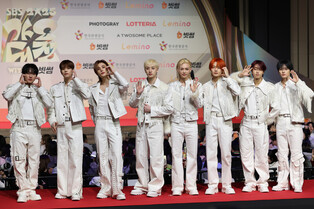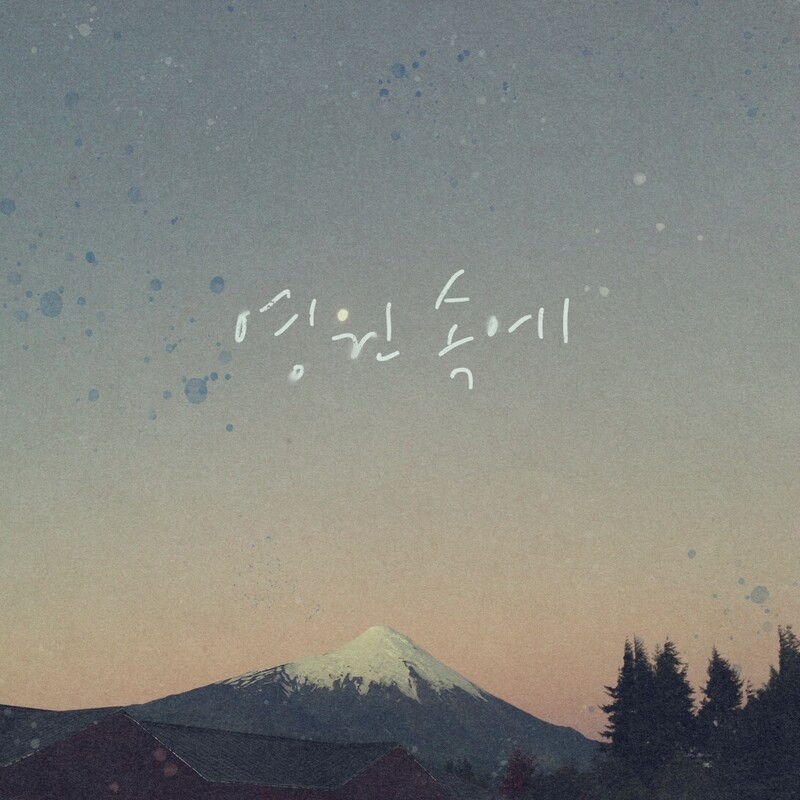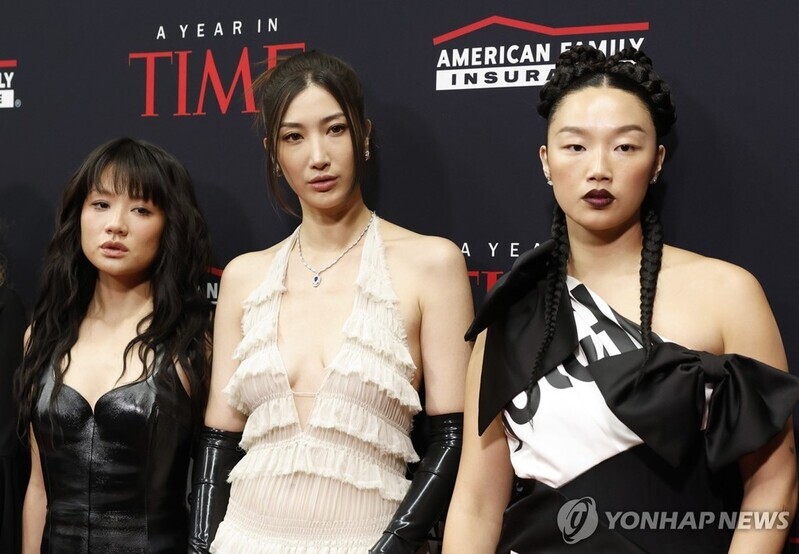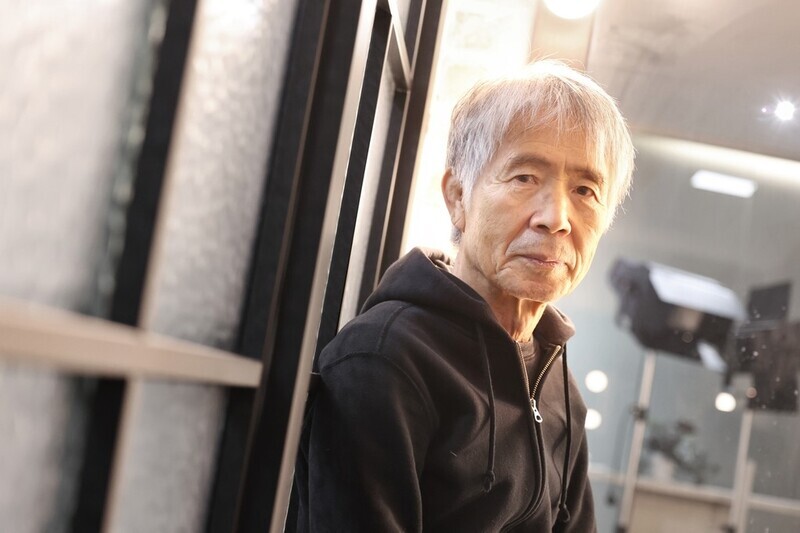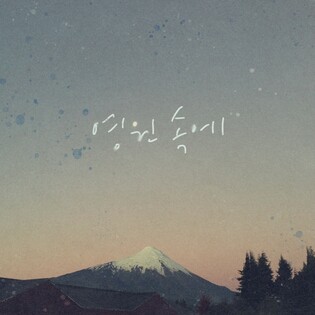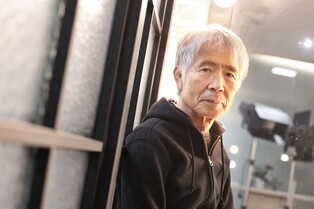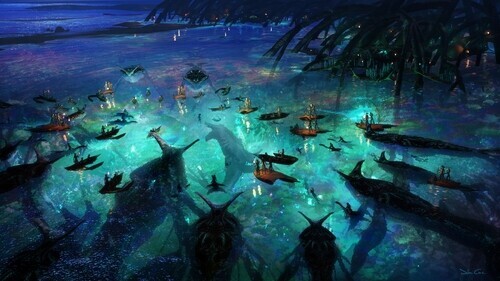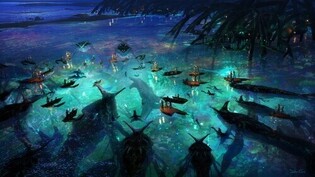 |
| ▲ An official inspects the exhibition "Shaping a Blue World: Goryeo Figurative Celadon" ahead of its opening at the National Museum of Korea in Yongsan-gu, Seoul, on November 25, 2024, in this photo provided by the museum. (PHOTO NOT FOR SALE) (Yonhap) |
SEOUL, Nov. 25 (Yonhap) -- A celadon vessel, shaped like a melon with a flower-like opening and a skirt-like base, exudes a unique harmony of form. This masterpiece, the Celadon Melon-shaped Bottle, designated as a National Treasure, is said to have been excavated from the tomb of King Injong (reigned 1122–1146) of Goryeo.
Though its shape resembles melon-shaped celadon porcelain from Jingdezhen, Jiangxi Province, China, the distinctively serene and clear bluish-green hue sets it apart—a hallmark of Goryeo celadon craftsmanship.
An exhibition at the National Museum of Korea, titled Shaping a Blue World: Goryeo Figurative Celadon, opens on November 26 in the special exhibition room of the Permanent Exhibition Hall. This is the first exhibition to exclusively spotlight figurative celadon from the Goryeo Dynasty, celebrating their artistic and cultural heritage.
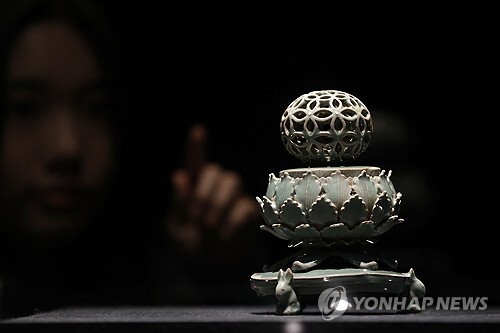 |
| ▲ Officials examine the "Celadon Openwork Incense Burner with Seven Treasure Motifs" at the National Museum of Korea in Yongsan-gu, Seoul, on November 25, 2024, ahead of the opening of the special exhibition "Shaping a Blue World: Goryeo Figurative Celadon," in this photo provided by the museum. (PHOTO NOT FOR SALE) (Yonhap) |
Director Kim Jae-hong of the National Museum of Korea highlighted during a press conference on November 25 that the exhibition emphasizes the intricate and imaginative forms of Goryeo figurative celadon, showcasing the peak of Goryeo’s artistic achievements.
The exhibition brings together 274 works, including 11 National Treasures, 9 Treasures, and 1 Registered Cultural Heritage item. These artifacts are sourced from 25 domestic institutions and private collectors, as well as major institutions in China, the United States, and Japan.
Yoo-ri Seo, the curator of the exhibition, explained, “Our aim was to present the quintessence of Korean culture by showcasing celadon’s sublime hues, exceptional forms, and unique aesthetic sensibility.”
The exhibition begins with the captivating Celadon Ewer in the Shape of a Fish-dragon, a National Treasure estimated to have been created in the 12th century. This vessel represents the mythical fish-dragon, believed to control water, and could hold approximately 0.8 liters of liquid, the equivalent of 16 soju glasses.
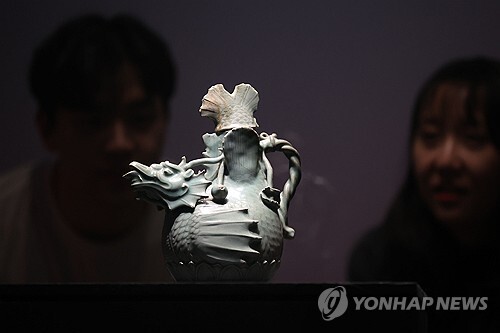 |
| ▲ Officials examine the "National Treasure Celadon Ewer in the Shape of a Fish-dragon" at the National Museum of Korea in Yongsan-gu, Seoul, on November 25, 2024, ahead of the opening of the special exhibition "Shaping a Blue World: Goryeo Figurative Celadon," in this photo provided by the museum. (PHOTO NOT FOR SALE) (Yonhap) |
Visitors can also explore the figurative traditions of earlier Korean pottery, with various forms of figurative earthenware and clay figurines from the Silla and Gaya periods (3rd–6th centuries).
The centerpiece of the exhibition features an array of Goryeo figurative celadon works, including incense burners and water droppers shaped like mythical creatures such as turtle-dragons, as well as delicate floral motifs like the Seven Treasure-patterned Incense Burner.
Among the highlights is the Celadon Gourd-shaped Ewer with Lotus and Flower Design (National Treasure), reportedly excavated from the tomb of Choe Hang (1209–1257), a prominent figure of the Goryeo military regime.
Natural motifs like ducks, monkeys, peaches, pomegranates, and bamboo shoots also feature prominently, revealing the Goryeo people’s affinity for nature.
The exhibition additionally showcases human-shaped celadon figures, such as the Seated Arhat Figurine, believed to have been made in the 13th century during the Mongol invasions when Goryeo’s capital was relocated to Ganghwa Island.
The exhibition delves into the unique aesthetic and craftsmanship of figurative celadon, contrasting 12th-century Goryeo works with artifacts from China’s Northern Song Dynasty (960–1127).
The museum also presents insights into the manufacturing techniques of Goryeo celadon, derived from advanced scientific investigations like CT scans and 3D shape data analysis conducted in 2022–2023.
Fragments of celadon unearthed from kilns in Gangjin, Jeollanam-do, and Buan, Jeollabuk-do, as well as recently recovered artifacts from underwater sites in Taean, Ma-do, and the Myeongnyang Strait, are also on display.
Lee Ae-ryeong, the museum’s head researcher, emphasized that the manufacturing techniques of Goryeo figurative celadon remain unparalleled, even by today’s standards, highlighting its status as a pinnacle of global ceramic art.
While some overlap with the museum’s existing celadon exhibit is noted, the museum assures that the new exhibition offers a broader perspective by incorporating recent archaeological discoveries and artifacts reflecting spiritual aspirations.
The exhibition runs until March 3, 2024.
(C) Yonhap News Agency. All Rights Reserved


















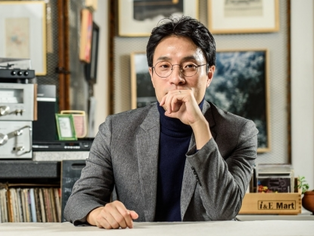
![[2026 Outlook] BTS, BLACKPINK comebacks; UNESCO World Heritage session in Busan fuel K-culture momentum](/news/data/20251226/p1065576816972067_337_h.jpg)
